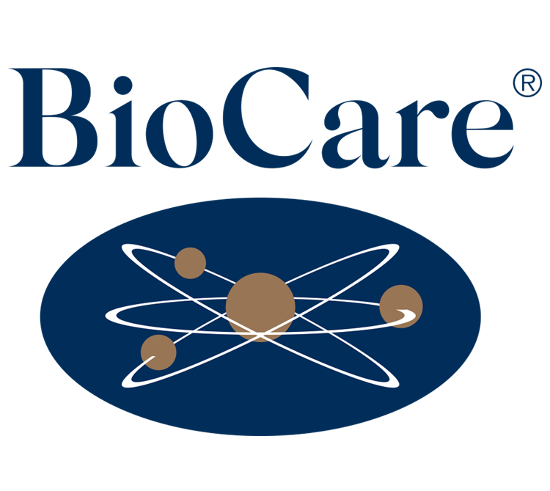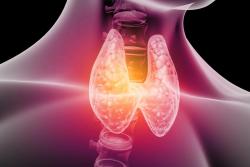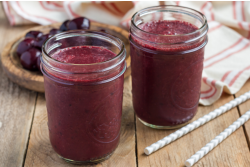The Crosstalk Between Female Hormones and the Gut & Vaginal Microbiomes
The gut and genital tract microflora of females are complex biological ecosystems that are in continuous communication with each other. The bacteria that colonise the vagina evolved through translocation of bacteria from the gut to the vagina, or through mother-to-child transfer during delivery. The vaginal microbiome is composed of over 200 species and is unique to each female, as it differs depending on genes, age, hygiene, dietary habits, ethnicity, and use of lubricants or medications.1,2 The overall health of the vagina depends on several factors, namely a healthy balance of the hormones oestrogen and progesterone, good quality connective tissue, and a robust and diverse balance of beneficial bacteria that reside in the genital area which make up the vaginal microbiome.3 The normal vaginal microflora consists of Lactobacillus bacteria that emerge from the gut. This includes L. crispatus, L. gasseri, L.rhamnosus, L. salivarius, and L. plantarum with some Bifidobacterium species. These strains produce lactic acid, which maintains the vaginal pH to be within the required 3.5-4.5. This acidity is essential to prevent opportunistic bacteria from proliferating uncontrollably. Lactobacillus strains also exert a natural antimicrobial and anti-inflammatory effect, which keeps foreign bacteria at bay. Other commensal anaerobic species with great propensity to becoming pathogens, especially when Lactobacilli are depleted include Gardnerella, Prevotella, Megasphaera, Atopobium, Streptococcus, Mobiluncus, Mycoplasma and Peptoniphilus. When in high levels, these strains may contribute to vaginal infections such as bacterial vaginosis (BV).4
Pathogenic infections within the gut e.g. Escherichia coli (E. coli) and Candida strains (mostly Candida albicans) are thought to directly affect bacterial composition of the vagina due to their ability to translocate to the vagina and multiply.5
The Role of Oestrogen in Regulating the Vaginal Microbiome
Oestrogen is particularly important to promote healthy epithelial and connective tissues of the vagina, therefore fluctuations in oestrogen levels have their part to play in the lubrication and bacterial balance of the vagina. The vaginal microbiome evolves over a women’s lifetime due to these natural increases and decreases in oestrogen. During childhood, the vagina has a more alkaline pH and is predominantly colonised by cutaneous and faecal microorganisms, but hormonal changes in puberty cause the pH to decrease, becoming more acidic, which allows Lactobacillus species to proliferate.6 The vaginal microbiome also changes during pregnancy, showing reductions in richness and diversity, becoming predominantly Lactobacillus strains due to oestrogen affecting the thickness of vaginal mucosa. This change may be a contributing factor to an increased risk of vulvovaginal candidiasis during pregnancy.7 During the menopause, there are significant changes to the vaginal microbiome again,2 as oestrogen levels decrease, we also see a reduction in Lactobacilli, leading to colonisation with cutaneous microorganisms, including Staphylococcus, which leads to an increase in pH.8,9 The combination of low oestrogen and a reduction in Lactobacilli strains can contribute to symptoms such as vulvovaginal atrophy, vaginal dryness and infections such as vulvovaginal candidiasis and bacterial vaginosis.10,11
Possible Causes of Vaginal Dysbiosis
Vaginal infections are very common in women from their teenage years through to menopause. It’s estimated that around 75% of women experience vulvovaginal candidiasis within their lifetime,12 and 29.2% will have an occurrence of bacterial vaginosis.13 Unfortunately, women who have hormonal imbalances are prime targets for reoccurring vaginal infections. The menstrual cycle alone can contribute to changes within the vaginal microbiome. For example, the pH of the vagina can increase during menses due to menstrual blood being slightly alkaline, which contributes to changes in the vaginal microbiome and increased susceptibility to infections during that time.14
There are mixed results when investigating the effects of hormonal contraceptives on the vaginal microbiome. Some studies have found that hormonal contraceptive use can alter the microbiome in a negative way, increasing the risk of sexually transmitted diseases, bacterial vaginosis, and overgrowths of Candida albicans.15,16 Progestin-only contraceptives have been found to reduce overall abundance of Lactobacillus species.17 However, other studies have found that combined oral contraceptives increased the abundance of Lactobacillus species, while reducing growth of pathogenic species.18
The oral contraceptive pill can cause decreases in the diversity and abundance of the gut microbiome,19 as well as depletion of nutrients needed for hormones, structure, and immune function. This includes B vitamins, vitamin C, E, zinc, selenium, and magnesium.20 The depletion of the essential nutrients, especially folate, vitamin B6, zinc and vitamin E,21 alongside changes within the gut, may play a role in the development of more severe and recurrent vaginal infections.22 This may indicate a need for women on birth control to take a probiotic supplement alongside additional nutrients.
Other common causes of vaginal microbiome disruption include:
Restoring the Vaginal Microbiome
Both oral and topical probiotics can support the vaginal microbiome by secreting antimicrobial peptides such as lactic acid, hydrogen peroxide, and bacteriocin, which maintain the vaginal acidic pH, making it more difficult for pathogens to establish themselves.24 Additionally, probiotic supplementation may have indirect effects on the vaginal microbiome through alteration of the estrobolome. This collection of bacteria can influence circulating oestrogen levels through the secretion of enzymes such as beta-glucuronidase which deconjugates oestrogens into their active forms.25 As vaginal dysbiosis is associated with increased risk of certain symptoms and conditions, you may consider a probiotic in women who suffer with recurrent thrush, BV, or urinary tract infections (UTIs), currently on birth control, planning pregnancy, or going through the menopause.
There are a few key strains that can be particularly beneficial for maintaining female health:
With vaginal infections being so common in women, it is encouraging to see the potential probiotic supplementation has in supporting women and reducing the risk of both symptoms and infections. It’s important to note the bi-directional relationship between the microbiome and oestrogen, which may emphasise the need to consider both areas while supporting female health. In addition, the natural shifts in oestrogen over a woman’s lifetime can influence both the structure and microbiome of the vagina, which have an overall effect on female health.
References
1. Barrientos-Durán A, Fuentes-López A, de Salazar A, Plaza-Díaz J, García F. Reviewing the Composition of Vaginal Microbiota: Inclusion of Nutrition and Probiotic Factors in the Maintenance of Eubiosis. Nutrients 2020, Vol 12, Page 419. 2020;12(2):419. doi:10.3390/NU12020419
2. Muhleisen AL, Herbst-Kralovetz MM. Menopause and the vaginal microbiome. Maturitas. 2016;91:42-50. doi:10.1016/J.MATURITAS.2016.05.015
3. Wessels JM, Felker AM, Dupont HA, Kaushic C. The relationship between sex hormones, the vaginal microbiome and immunity in HIV-1 susceptibility in women. Disease Models & Mechanisms. 2018;11(9). doi:10.1242/DMM.035147
4. Amabebe E, Anumba DOC. The vaginal microenvironment: The physiologic role of Lactobacilli. Frontiers in Medicine. 2018;5(JUN):181. doi:10.3389/FMED.2018.00181/BIBTEX
5. Vásquez A, Ahrné S, Jeppsson B, Molin G, Molin R. Oral administration of Lactobacillus and Bifidobacterium strains of intestinal and vaginal origin to healthy human females: Re-isolation from faeces and vagina. Published online 2009. doi:10.1080/08910600510031376
6. Auriemma RS, Scairati R, del Vecchio G, et al. The Vaginal Microbiome: A Long Urogenital Colonization Throughout Woman Life. Frontiers in Cellular and Infection Microbiology. 2021;11:613. doi:10.3389/FCIMB.2021.686167/BIBTEX
7. Gupta P, Singh MP, Goyal K. Diversity of Vaginal Microbiome in Pregnancy: Deciphering the Obscurity. Frontiers in Public Health. 2020;8:326. doi:10.3389/FPUBH.2020.00326/BIBTEX
8. Oliveira NS de, Lima ABF de, Brito JCR de, Sarmento ACA, Gonçalves AKS, Eleutério JJr. Postmenopausal Vaginal Microbiome and Microbiota. Frontiers in Reproductive Health. 2022;0:112. doi:10.3389/FRPH.2021.780931
9. Clabaut M, Suet A, Racine P-J, et al. Effect of 17β-estradiol on a human vaginal Lactobacillus crispatus strain. Scientific Reports |. 123AD;11:7133. doi:10.1038/s41598-021-86628-x
10. Kim J-M, Park YJ. Probiotics in the Prevention and Treatment of Postmenopausal Vaginal Infections: Review Article. Journal of Menopausal Medicine. 2017;23(3):139. doi:10.6118/JMM.2017.23.3.139
11. Oliveira NS de, Lima ABF de, Brito JCR de, Sarmento ACA, Gonçalves AKS, Eleutério JJr. Postmenopausal Vaginal Microbiome and Microbiota. Frontiers in Reproductive Health. 2022;0:112. doi:10.3389/FRPH.2021.780931
12. van Riel SJJM, Lardenoije CMJG, Oudhuis GJ, Cremers NAJ. Treating (Recurrent) Vulvovaginal Candidiasis with Medical-Grade Honey—Concepts and Practical Considerations. Journal of Fungi. 2021;7(8). doi:10.3390/JOF7080664
13. Koumans EH, Sternberg M, Bruce C, et al. The prevalence of bacterial vaginosis in the United States, 2001-2004; associations with symptoms, sexual behaviors, and reproductive health. Sexually Transmitted Diseases. 2007;34(11):864-869. doi:10.1097/OLQ.0B013E318074E565
14. Lin YP, Chen WC, Cheng CM, Shen CJ. Vaginal pH Value for Clinical Diagnosis and Treatment of Common Vaginitis. Diagnostics. 2021;11(11). doi:10.3390/DIAGNOSTICS11111996
15. Achilles SL, Austin MN, Meyn LA, Mhlanga F, Chirenje ZM, Hillier SL. Impact of contraceptive initiation on vaginal microbiota. American Journal of Obstetrics and Gynecology. 2018;218(6):622.e1. doi:10.1016/J.AJOG.2018.02.017
16. Balle C, Konstantinus IN, Jaumdally SZ, et al. Hormonal contraception alters vaginal microbiota and cytokines in South African adolescents in a randomized trial. Nature Communications 2020 11:1. 2020;11(1):1-15. doi:10.1038/s41467-020-19382-9
17. Song SD, Acharya KD, Zhu JE, et al. Daily Vaginal Microbiota Fluctuations Associated with Natural Hormonal Cycle, Contraceptives, Diet, and Exercise. mSphere. 2020;5(4). doi:10.1128/MSPHERE.00593-20/SUPPL_FILE/MSPHERE.00593-20-ST001.DOCX
18. Gupta K, Hillier SL, Hooton TM, Roberts PL, Stamm WE. Effects of Contraceptive Method on the Vaginal Microbial Flora: A Prospective Evaluation. The Journal of Infectious Diseases. 2000;181(2):595-601. doi:10.1086/315267
19. Mihajlovic J, Leutner M, Hausmann B, et al. Combined hormonal contraceptives are associated with minor changes in composition and diversity in gut microbiota of healthy women. Environ Microbiol. 2021;23(6):3037-3047. doi:10.1111/1462-2920.15517
20. Oral contraceptives and changes in nutritional requirements - PubMed. Accessed March 17, 2022. https://pubmed.ncbi.nlm.nih.gov/23852908/
21. Neggers YH, Nansel TR, Andrews WW, et al. Dietary Intake of Selected Nutrients Affects Bacterial Vaginosis in Women. The Journal of Nutrition. 2007;137(9):2128-2133. doi:10.1093/JN/137.9.2128
22. Sustr V, Foessleitner P, Kiss H, Farr A. Vulvovaginal Candidosis: Current Concepts, Challenges and Perspectives. Journal of Fungi. 2020;6(4):1-14. doi:10.3390/JOF6040267
23. Reid G. Has knowledge of the vaginal microbiome altered approaches to health and disease? F1000Res. 2018;7. doi:10.12688/F1000RESEARCH.13706.1
24. Delgado-Diaz DJ, Tyssen D, Hayward JA, Gugasyan R, Hearps AC, Tachedjian G. Distinct Immune Responses Elicited From Cervicovaginal Epithelial Cells by Lactic Acid and Short Chain Fatty Acids Associated With Optimal and Non-optimal Vaginal Microbiota. Frontiers in Cellular and Infection Microbiology. 2020;9:446. doi:10.3389/FCIMB.2019.00446/BIBTEX
25. Baker JM, Al-Nakkash L, Herbst-Kralovetz MM. Estrogen-gut microbiome axis: Physiological and clinical implications. Maturitas. 2017;103:45-53. doi:10.1016/J.MATURITAS.2017.06.025
26. Mogna L, Deidda F, Nicola S, Amoruso A, del Piano M, Mogna G. In Vitro Inhibition of Klebsiella pneumoniae by Lactobacillus delbrueckii Subsp. delbrueckii LDD01 (DSM 22106): An Innovative Strategy to Possibly Counteract Such Infections in Humans? J Clin Gastroenterol. 2016;50:S136-S139. doi:10.1097/MCG.0000000000000680
27. Mogna L, del Piano M, Deidda F, et al. Assessment of the in vitro inhibitory activity of specific probiotic bacteria against different Escherichia coli strains. Journal of Clinical Gastroenterology. 2012;46(SUPPL. 1). doi:10.1097/MCG.0b013e31826852b7
28. Rossi A, Rossi T, Bertini M, Caccia G. The use of Lactobacillus rhamnosus in the therapy of bacterial vaginosis. Evaluation of clinical efficacy in a population of 40 women treated for 24 months. Arch Gynecol Obstet. 2010;281(6):1065-1069. doi:10.1007/S00404-009-1287-6
29. Reid G, Charbonneau D, Erb J, et al. Oral use of Lactobacillus rhamnosus GR-1 and L. fermentum RC-14 significantly alters vaginal flora: randomized, placebo-controlled trial in 64 healthy women. FEMS Immunol Med Microbiol. 2003;35(2):131-134. doi:10.1016/S0928-8244(02)00465-0
30. de Almeida MO, Carvalho R, Aburjaile FF, et al. Characterization of the first vaginal Lactobacillus crispatus genomes isolated in Brazil. PeerJ. 2021;9. doi:10.7717/PEERJ.11079
31. Wang S, Wang Q, Yang E, Yan L, Li T, Zhuang H. Antimicrobial compounds produced by vaginal Lactobacillus crispatus are able to strongly inhibit Candida albicans growth, hyphal formation and regulate virulence-related gene expressions. Frontiers in Microbiology. 2017;8(APR):564. doi:10.3389/FMICB.2017.00564/BIBTEX
32. Nardini P, Nãhui Palomino RA, Parolin C, et al. Lactobacillus crispatus inhibits the infectivity of Chlamydia trachomatis elementary bodies, in vitro study. Scientific Reports. 2016;6. doi:10.1038/SREP29024
33. Tabatabaei N, Eren AM, Barreiro LB, et al. Vaginal microbiome in early pregnancy and subsequent risk of spontaneous preterm birth: a case-control study. BJOG. 2019;126(3):349-358. doi:10.1111/1471-0528.15299
34. Dover SE, Aroutcheva AA, Faro S, Chikindas ML. NATURAL ANTIMICROBIALS AND THEIR ROLE IN VAGINAL HEALTH: A SHORT REVIEW. Int J Probiotics Prebiotics. 2008;3(4):219. Accessed February 16, 2022. /pmc/articles/PMC2908489/
35. Ocaña VS, de Ruiz Holgado AAP, Nader-Macías ME. Characterization of a Bacteriocin-Like Substance Produced by a Vaginal Lactobacillus salivarius Strain. Applied and Environmental Microbiology. 1999;65(12):5631. doi:10.1128/aem.65.12.5631-5635.1999
36. The role of lactic acid production by probiotic Lactobacillus species in vaginal health | Elsevier Enhanced Reader. Accessed February 17, 2022. https://reader.elsevier.com/reader/sd/pii/S0923250817300839?token=5D284F82D505F23E7A0A0D976FEB366381F8DA94DC02E82BBEAF97C2CF1FD78F2A912FB3C49BD5B7262239C6A4576993&originRegion=eu-west-1&originCreation=20220217122446
37. Nishida K, Sawada D, Yasui T, Kuwano Y, Rokutan K. Daily intake of Lactobacillus gasseri CP2305 ameliorates psychological premenstrual symptoms in young women: A randomized, double-blinded, placebo-controlled study. Journal of Functional Foods. 2021;80:104426. doi:10.1016/J.JFF.2021.104426
38. Itoh H, Sashihara T, Hosono A, Kaminogawa S, Uchida M. Lactobacillus gasseri OLL2809 inhibits development of ectopic endometrial cell in peritoneal cavity via activation of NK cells in a murine endometriosis model. Cytotechnology. 2011;63(2):205. doi:10.1007/S10616-011-9343-Z






